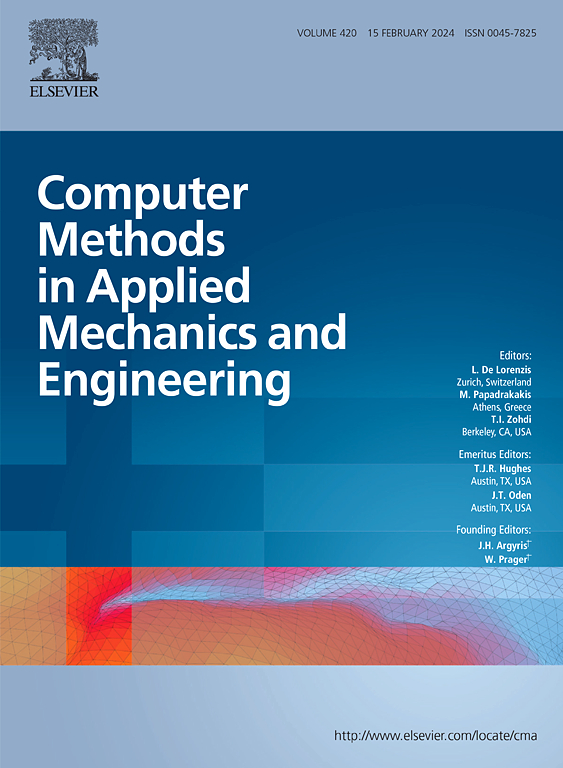Multi-domain topology optimization of connectable lattice structures with tunable transition patterns
IF 6.9
1区 工程技术
Q1 ENGINEERING, MULTIDISCIPLINARY
Computer Methods in Applied Mechanics and Engineering
Pub Date : 2025-02-01
DOI:10.1016/j.cma.2025.117786
引用次数: 0
Abstract
The connectivity issue has always been a critical topic in multi-domain topology optimization of lattice structures. In this work, a novel multi-domain topology optimization approach is proposed, in which a set of transitional unit cells that follow a particular varying pattern is introduced between adjacent base microstructures to achieve optimized, multi-class, and well-connected multi-scale structures. Such smooth and tunable transition patterns are realized by interpolation of bar diameter, shape-morphing, and parameterized implicit functions, which exhibit superior adaptability to disconnected microstructures with intricate geometric configurations. To embed the varying transitional unit cells at the specified interface precisely, a graded interface model that extends from the erosion-based interface identification method is established utilizing a linear density filter. Additionally, a SIMP-based multi-domain interpolation scheme considering both base microstructures and transitional unit cells is proposed, in which each piece of interface layer can be further separately defined to navigate situations with more than two lattice material phases. Several 2D and 3D numerical examples are presented to demonstrate the stability, effectiveness, and scalability of the proposed method.
求助全文
约1分钟内获得全文
求助全文
来源期刊
CiteScore
12.70
自引率
15.30%
发文量
719
审稿时长
44 days
期刊介绍:
Computer Methods in Applied Mechanics and Engineering stands as a cornerstone in the realm of computational science and engineering. With a history spanning over five decades, the journal has been a key platform for disseminating papers on advanced mathematical modeling and numerical solutions. Interdisciplinary in nature, these contributions encompass mechanics, mathematics, computer science, and various scientific disciplines. The journal welcomes a broad range of computational methods addressing the simulation, analysis, and design of complex physical problems, making it a vital resource for researchers in the field.

 求助内容:
求助内容: 应助结果提醒方式:
应助结果提醒方式:


